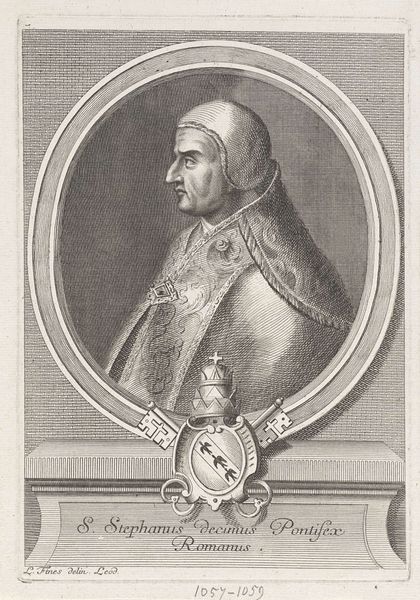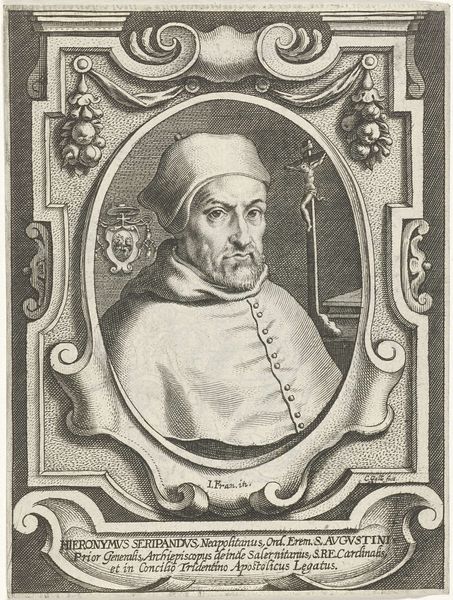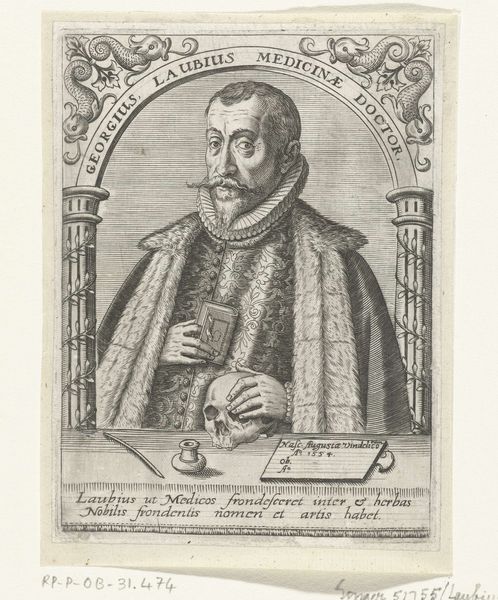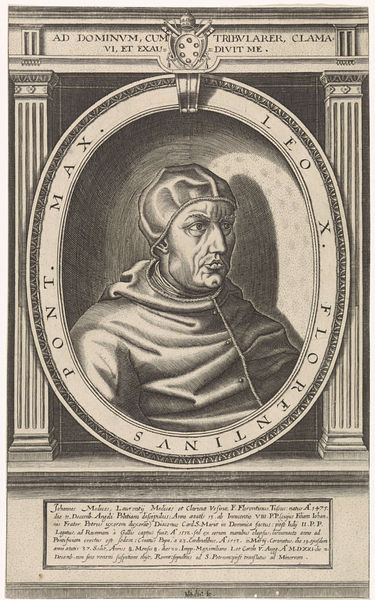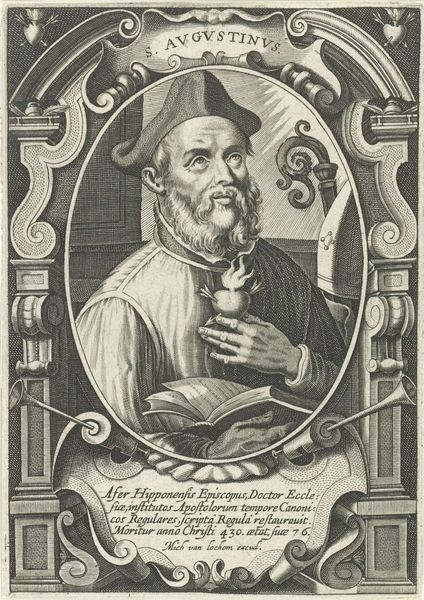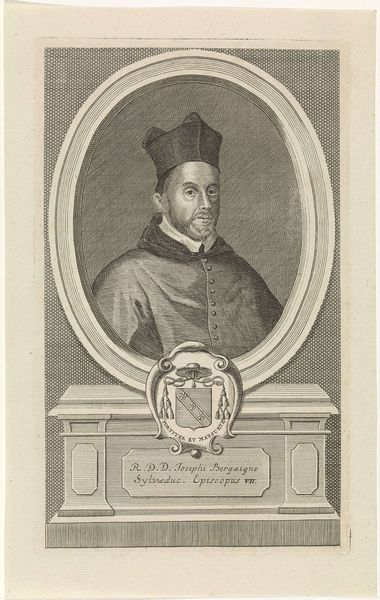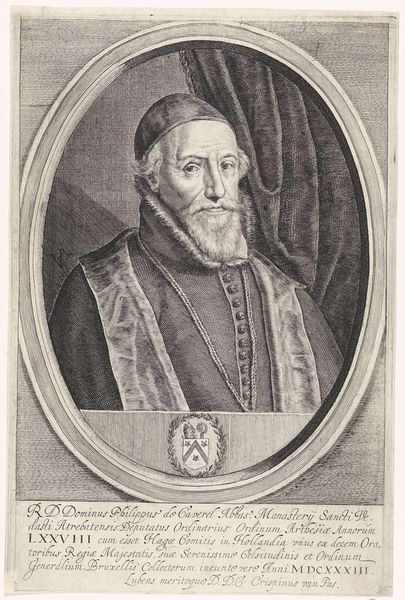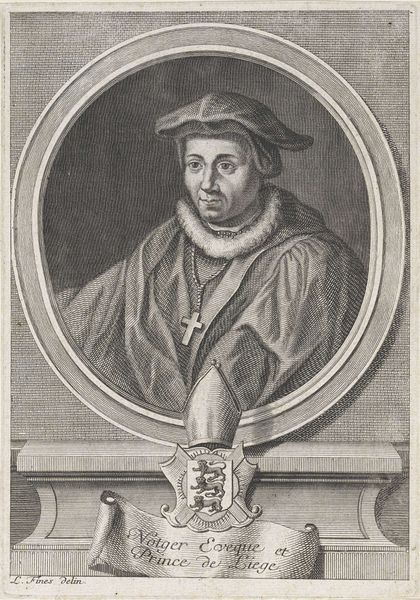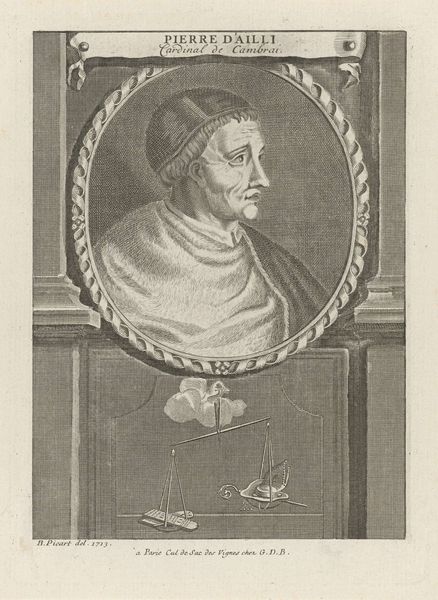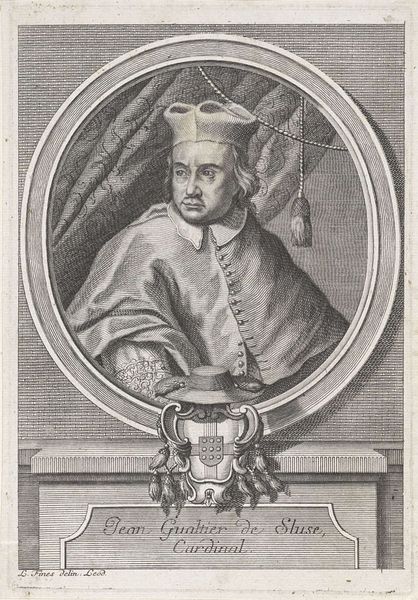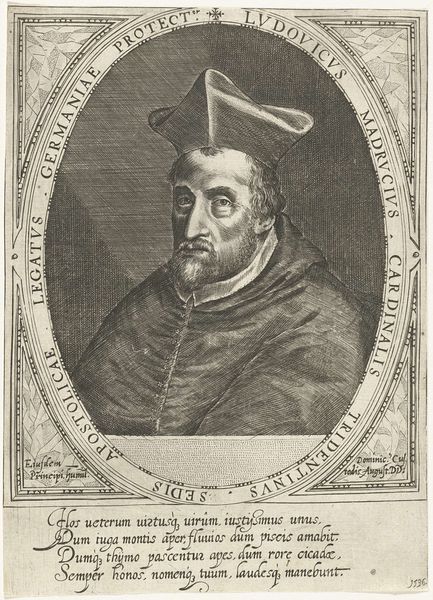
engraving
#
portrait
#
baroque
#
old engraving style
#
portrait reference
#
limited contrast and shading
#
line
#
portrait drawing
#
history-painting
#
engraving
Dimensions: height 234 mm, width 160 mm
Copyright: Rijks Museum: Open Domain
Curator: Here we have an engraving, likely dating from the 17th century, titled "Portret van paus Urbanus IV"—"Portrait of Pope Urban IV" in English. Editor: My first impression is how meticulous the linework is. You can really sense the hand of the engraver. It's almost like looking at a meticulously rendered drawing in metal. Curator: Absolutely. Engravings like this were often reproduced, serving both as historical records and vehicles for disseminating particular images and ideologies. Notice how the oval frame containing Urban IV almost feels like a coin or a cameo, solidifying his status. Editor: And it's fascinating to consider the materials themselves—the metal plate, the ink, the paper. These weren't readily available to everyone. Who was consuming these images? What function did this engraving fulfill in its original context, beyond simply documentation? Was it part of a book? Was it framed and displayed? Curator: It’s very probable it was part of a larger publication. Notice the symbolic weight the image carries: the Papal Tiara, the crossed keys of St. Peter—emblems of Papal authority. His garments, heavily embroidered, project the magnificence of the church. Even his severe profile seems calculated to inspire deference. The lily on the family crest! It shows a definite political program of self-representation at play. Editor: Exactly! And engraving was a laborious process; its reproducibility allowed for wide dissemination, making it a powerful tool to shape public perception, solidify power, and maybe even drive the narrative during a very specific and contested historical moment. This seemingly simple image then speaks volumes of a time and place when authority and representation were intensely intertwined with the very means of production and reproduction of these materials. Curator: That gives a new perspective, doesn't it? To see this engraving as not just a portrait, but also as a testament to the Church's desire to maintain a firm grip on its spiritual, political, and economic power. Editor: Precisely! Next time I see an engraving like this, I’ll definitely wonder who held the burin, what their status was, and how the image functioned in relation to the materials employed and the social networks that were built around this complex reproductive technology.
Comments
No comments
Be the first to comment and join the conversation on the ultimate creative platform.
